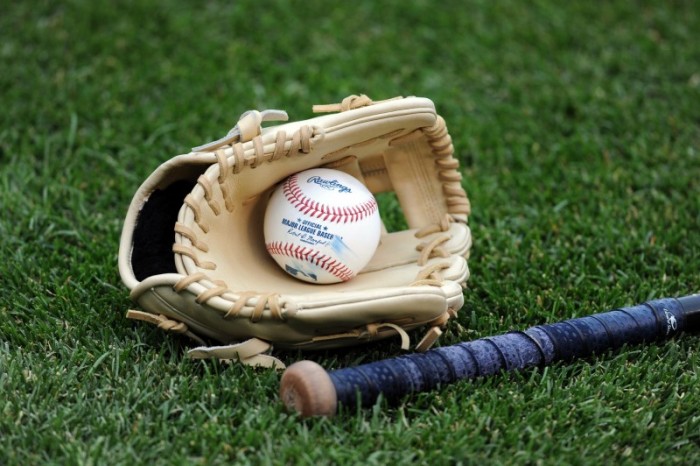By and large, selling a rebuild to fans isn’t that tough. The last two World Series winners, after all, run on talented young cores that were acquired via lengthy rebuilding projects. The truth is that it’s easier to lose when the future looks bright, and the Brewers system has in recent years been home to a constellation of would-be stars. Each new addition to the farm, from Brett Phillips to Keston Hiura, has been greeted by a frenzy of hype, whipped up into a towering mass of expectations that comes crashing down, perhaps unfairly, at any sign of adversity like a nervous soufflé (see: Ray, Corey).
It’s harder, perhaps, to know when pivot back to competitive ball at the highest level. But after a surprising run atop the standings in 2017 and a pair of bold offseason moves, the Brewers are ready to make that turn. Prospect hounds, take heart: Even after Milwaukee exchanged a number of potential stars for current-star Christian Yelich, plenty of exciting future major leaguers remain on every rung of the organizational ladder. Now that some of the cream of the system has been ladled into Miami’s cup, it’s time to become (re)acquainted with a few of the promising minor leaguers who’ve been buried behind teammates with louder tools or higher rankings.
Take 22-year-old catcher Jacob Nottingham, who’s still on track for a major league career despite posting mediocre offensive numbers in back-to-back seasons at AA Biloxi. At first glance, it’s easy to give short shrift to Nottingham’s development. He came into the Brewers organization following a powerful 2015 split between the Houston and Oakland systems, then proceeded to post a .234/.295/.347 batting line through his first turn as a Brewer at AA. He was tabbed as a bounce-back candidate entering the 2017 campaign, but quickly fell off the radar en route to an underwhelming .209/.326/.369 slash line. Numbers aren’t everything, though, and these in particular mask some tremendous developmental strides. Nottingham isn’t a sleeping giant, exactly, but he remains a quality prospect with as good a chance to crack a future big league roster as any in the still-strong Milwaukee system.
Quality catchers are scarce throughout the minor leagues and a number of the top talents come with question marks surrounding their ability to stick behind the dish. Nottingham once faced those questions, too, but he’s put in significant time answering them in recent seasons. In a rough 2016, he gunned down just 29 percent of prospective thieves on the base paths and allowed a staggering 21 passed balls in 831.3 innings. In 2017, those numbers jumped to 40 percent and fell to 9, respectively, across 708.7 innings. He committed nine errors, down from 15 the previous year. Finally, he posted a solid 7.1 framing runs across 6,194 chances en route to 5.5 Fielding Runs Above Average. (As a point of contrast, the vaunted Yadier Molina managed 5 framing runs in 8,380 chances for 4.7 FRAA last year in St. Louis.)
Then there’s the bat, recent author of that paltry .209 batting average. Beneath that number, there are signs for optimism. To start, Nottingham possesses 60 raw power; along with his arm, raw power is his best tool. He’s sometimes struggled to access that power in game situations, but that started to change in 2017, when his Isolated Slugging Percentage climbed from .113 and .160 thanks in part to a spike in fly balls. Nottingham recorded 32 extra base hits alongside 36 singles, a much better percentage than the 25 extra base hits he paired with 72 singles in 2016.
As a penalty for the extra airballs, Nottingham’s .255 BABIP was easily a career low. His uppercut swing is a thing of beauty when he gets a ball in a good spot, but he’s not deft enough with the stick to maneuver it throughout the zone and make consistent contact—particularly on breaking balls low and away. Still, he improved on that front in 2017, cutting his strikeout percentage from 30.3 down to 22.6. At the same time, he grew more selective on offerings outside of the strike zone and posted his best walk percentage (9.6) since rookie league ball with the Astros. The combination of patience and power was enough for a 103 wRC+ and a .263 TAv, both above average. Bust him out of Biloxi and into the inflated run-scoring environment of Colorado Springs, and Nottingham could claim his share of attention in the Pacific League.
Of course, there’s still work to be done. Despite his strides in blocking, Nottingham remains an imperfect receiver behind the plate. He’s done enough to quiet concerns about his defensive home, but can’t afford to let his foot off the gas. Offensively, his swing still carries extra length. To make an impact at the next level, Nottingham will have to shorten his stroke, better control the barrel, and perhaps dial down his fondness for the fly ball revolution (last year’s 48.9 flyball percentage is in extreme territory). But he’s still young: next year will be Nottingham’s age-23 season, and catchers in particular can be slow to develop. Nottingham is a competitive player who’s made adjustments before. Give him another year in the minors, maybe a year and a half, and he could be ready to give the Brewers Stephen Vogt’s production, only with better defense. That profile is a big league backup at the very least. The Brewers were sufficiently encouraged by his 2017 season to add him to the 40-man roster this winter; for what it’s worth, they also sent him to MLB’s Rookie Career Development Program. The organization sees a big league future in their young backstop, and Jacob Nottingham deserves a spot on your radar heading into 2018.
